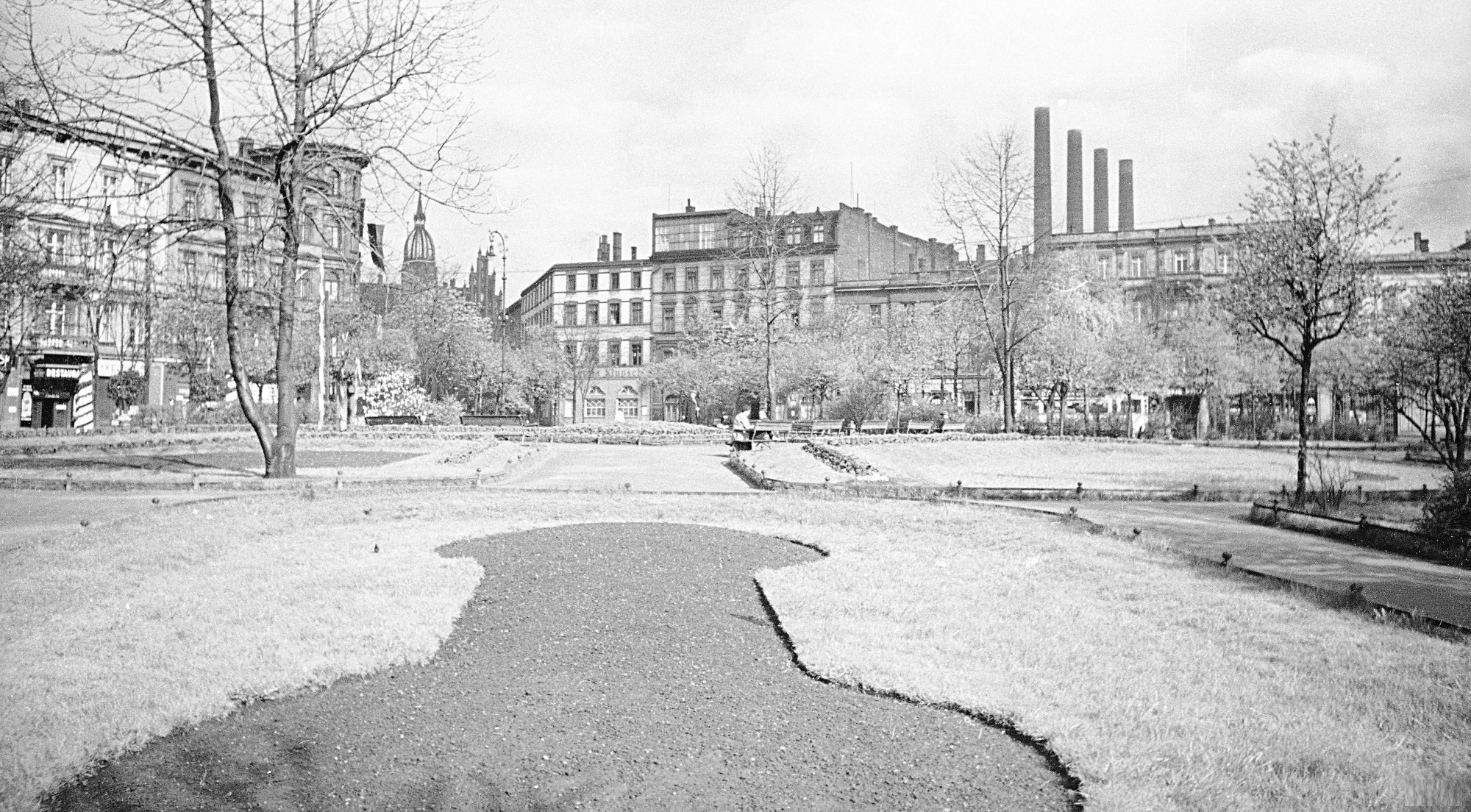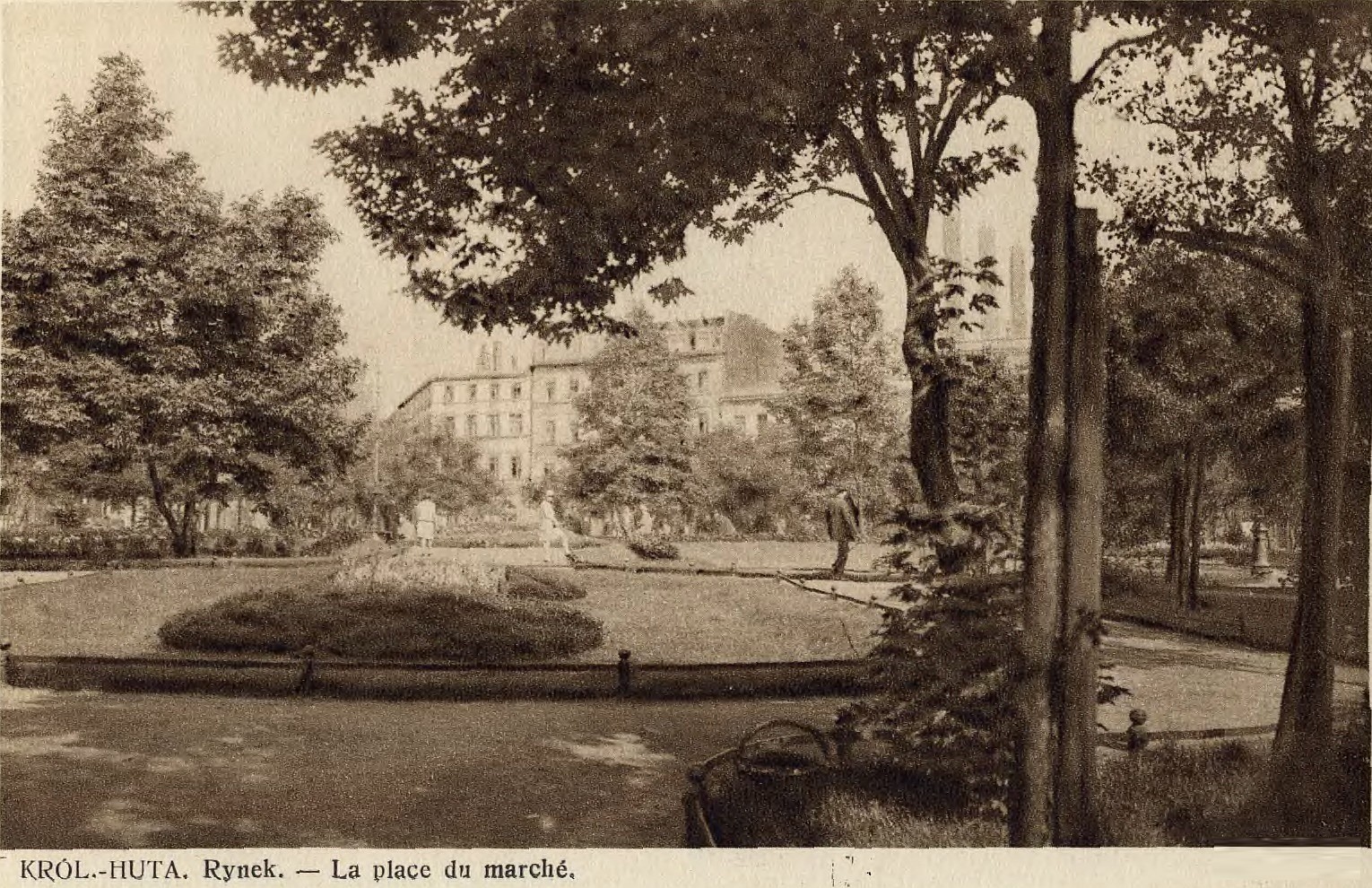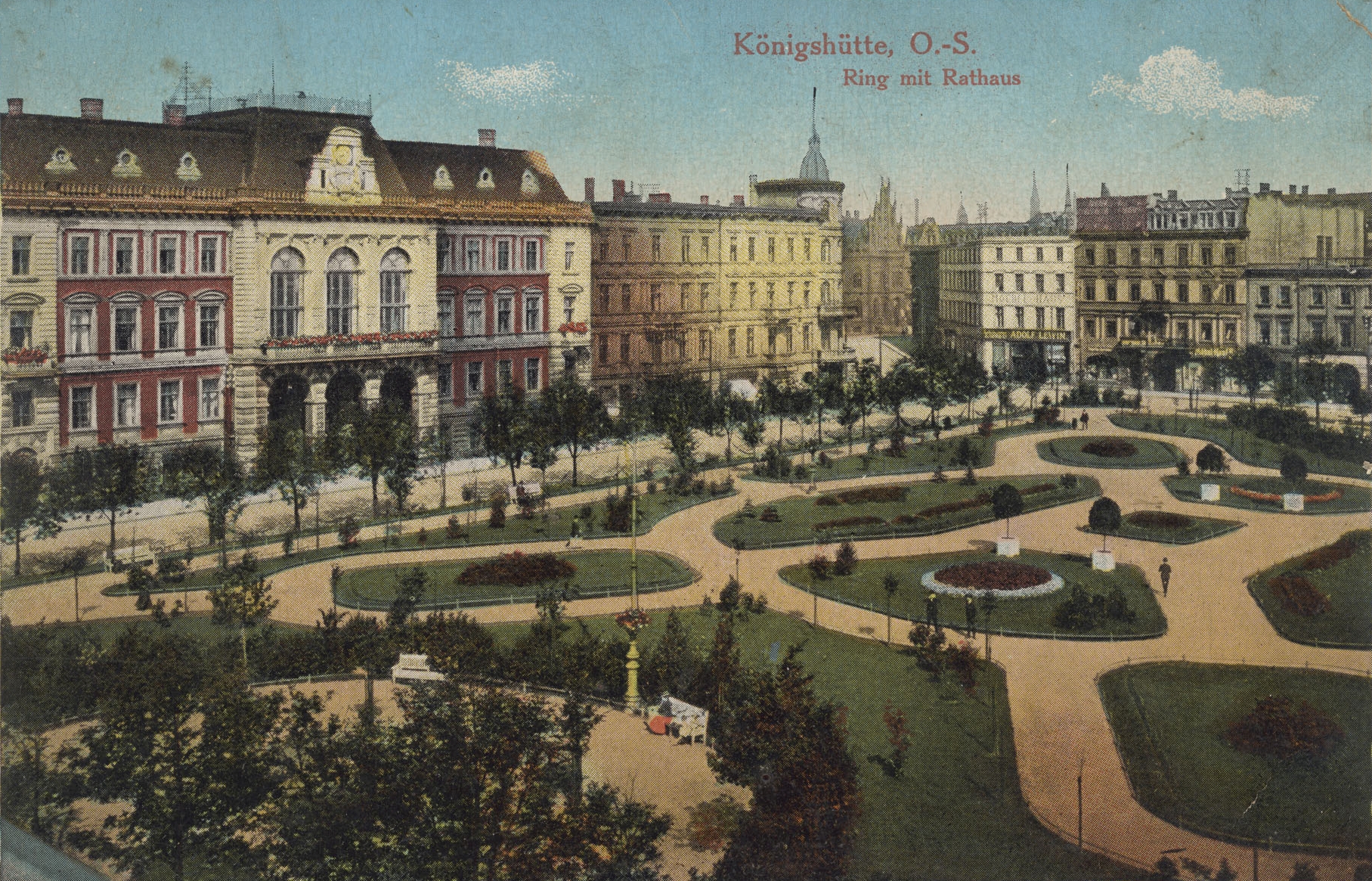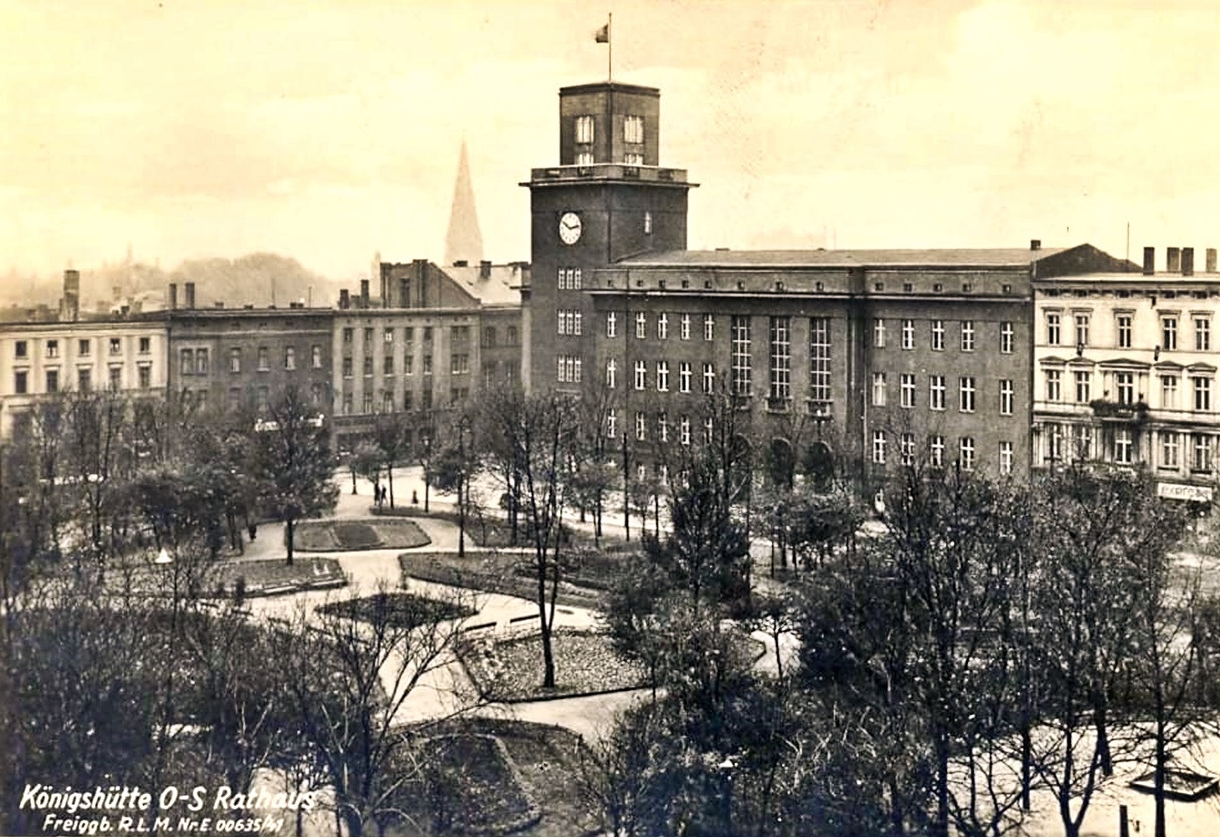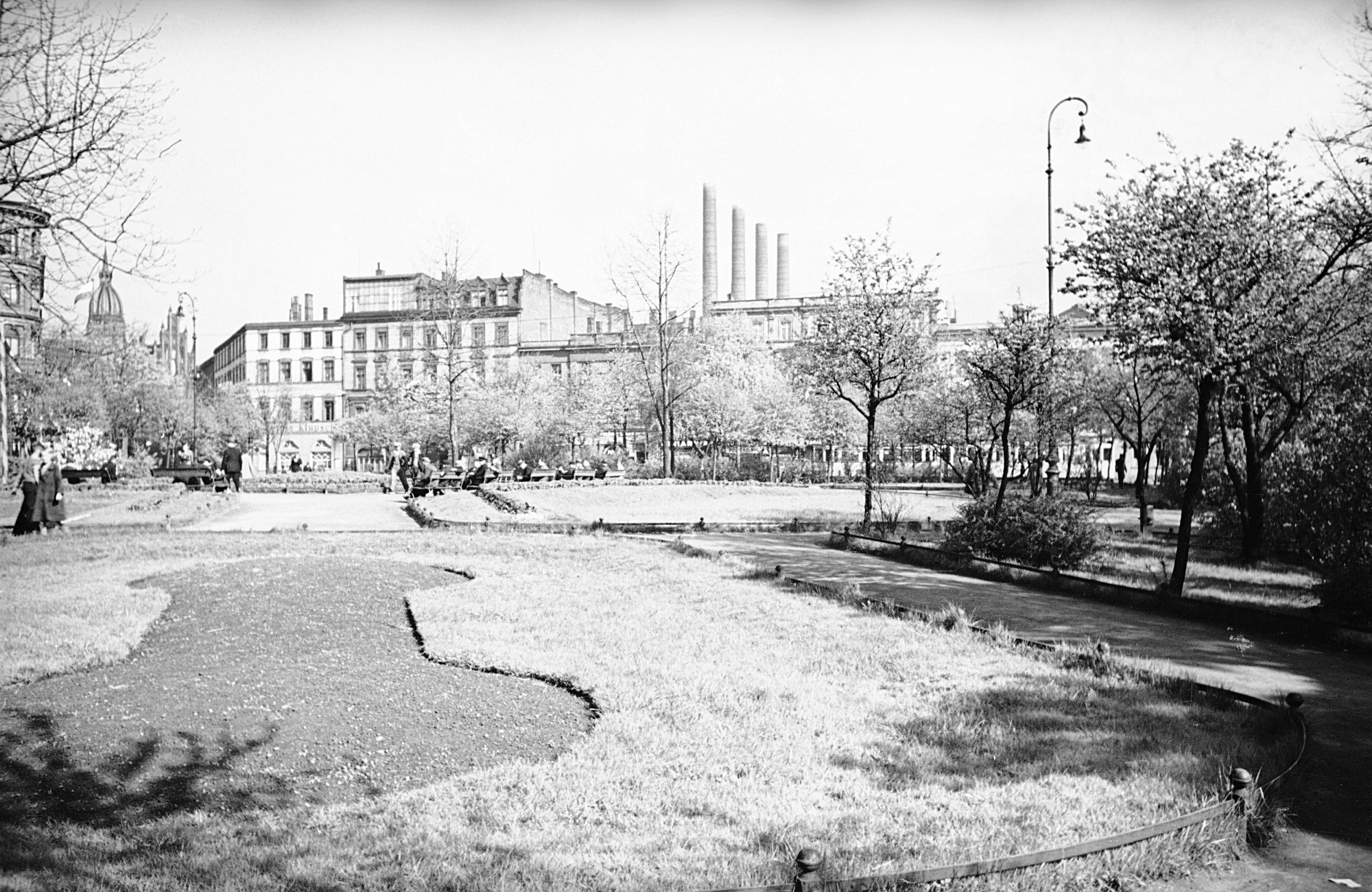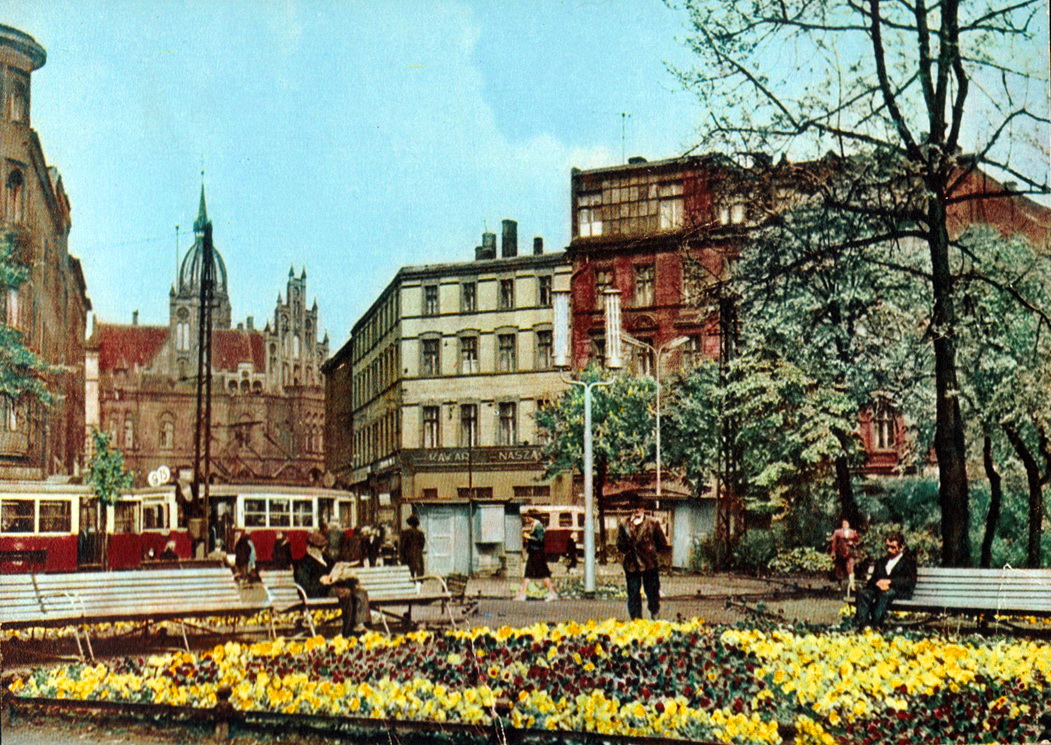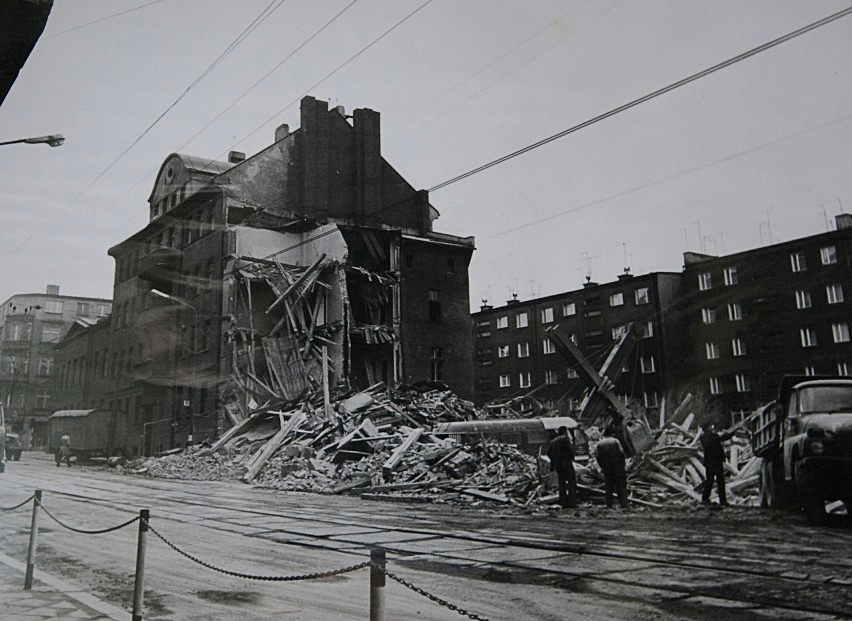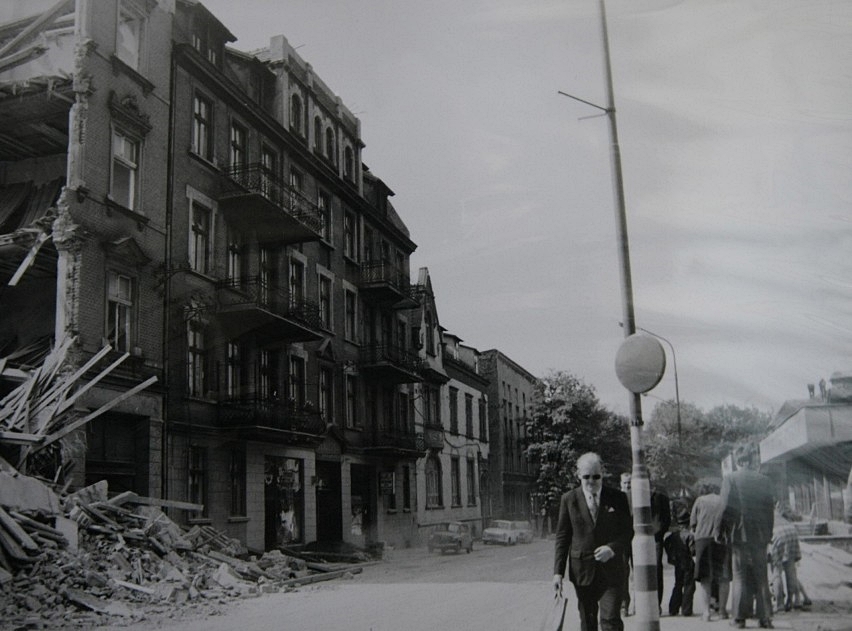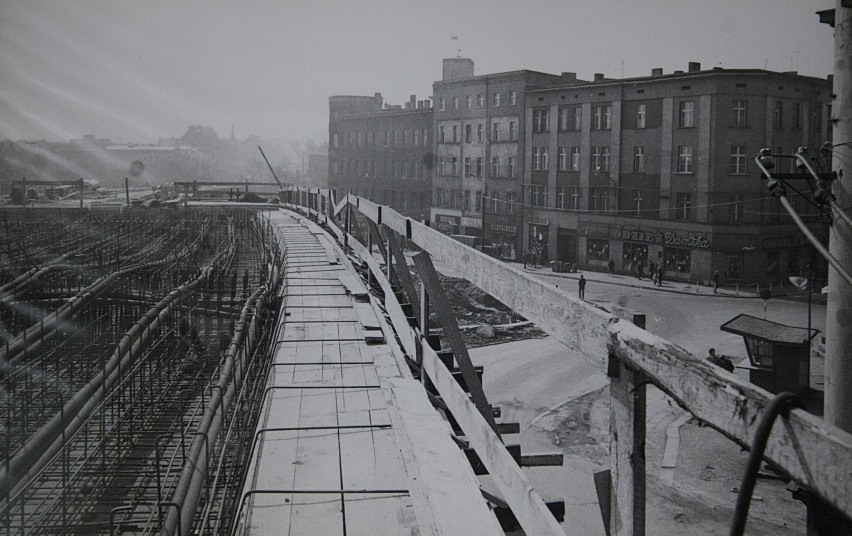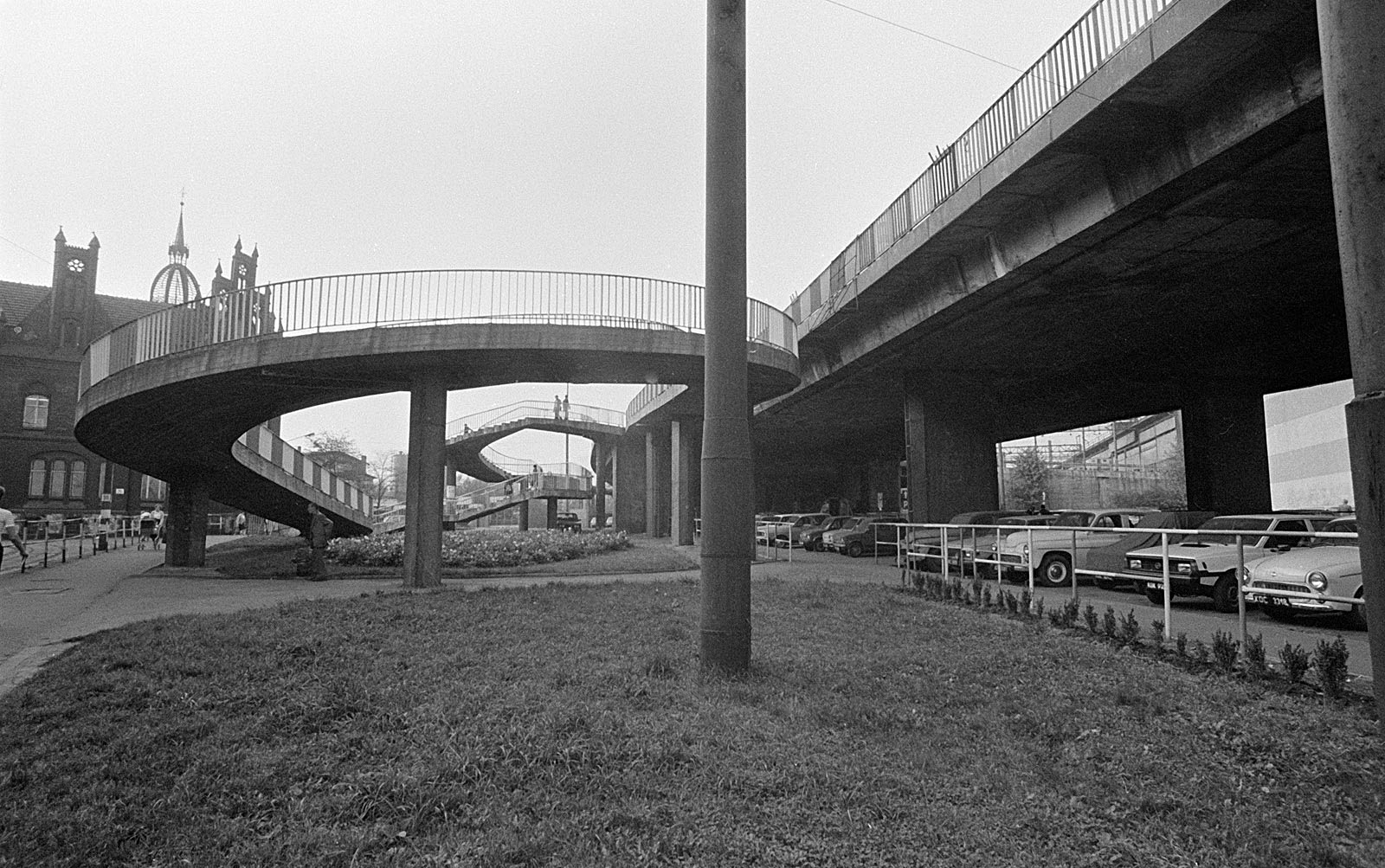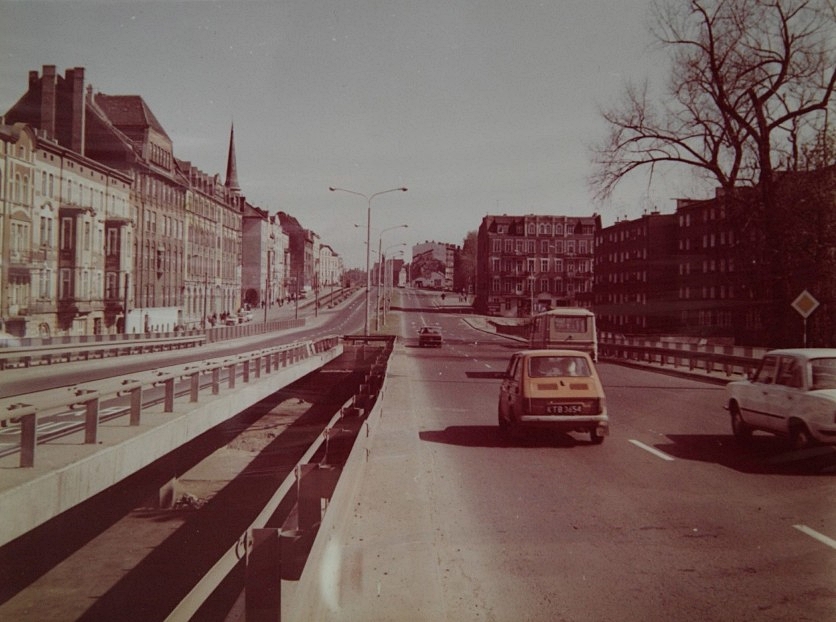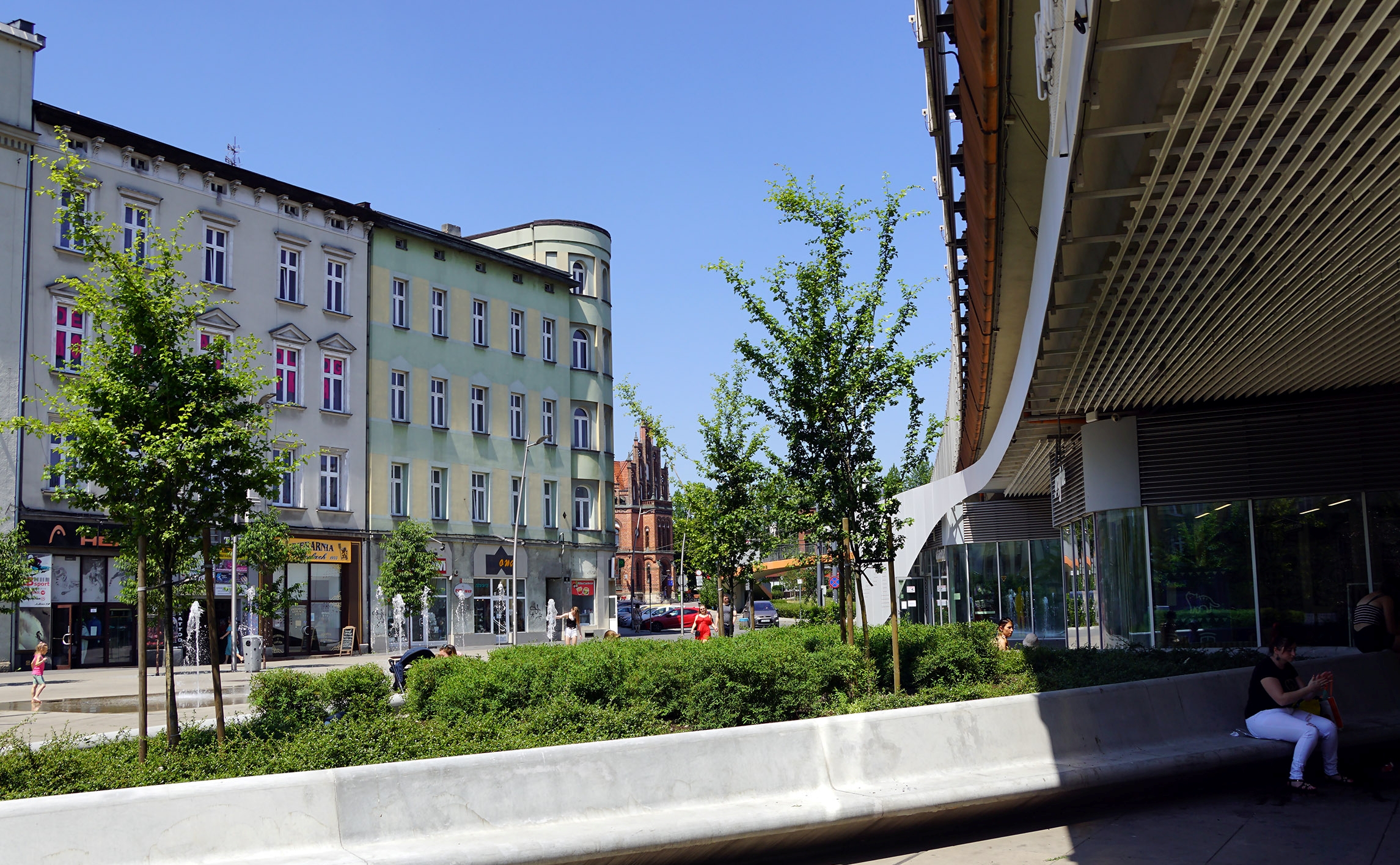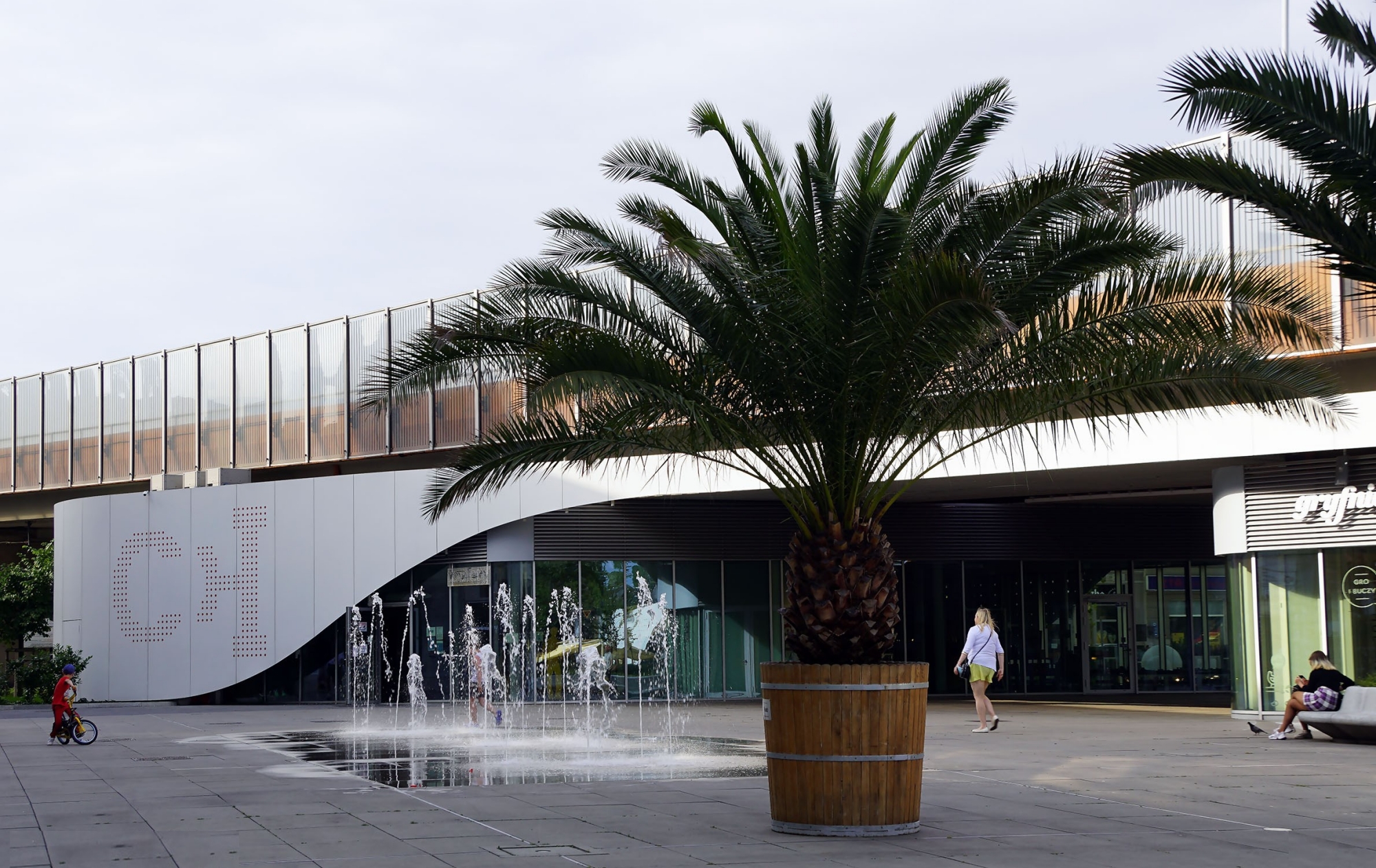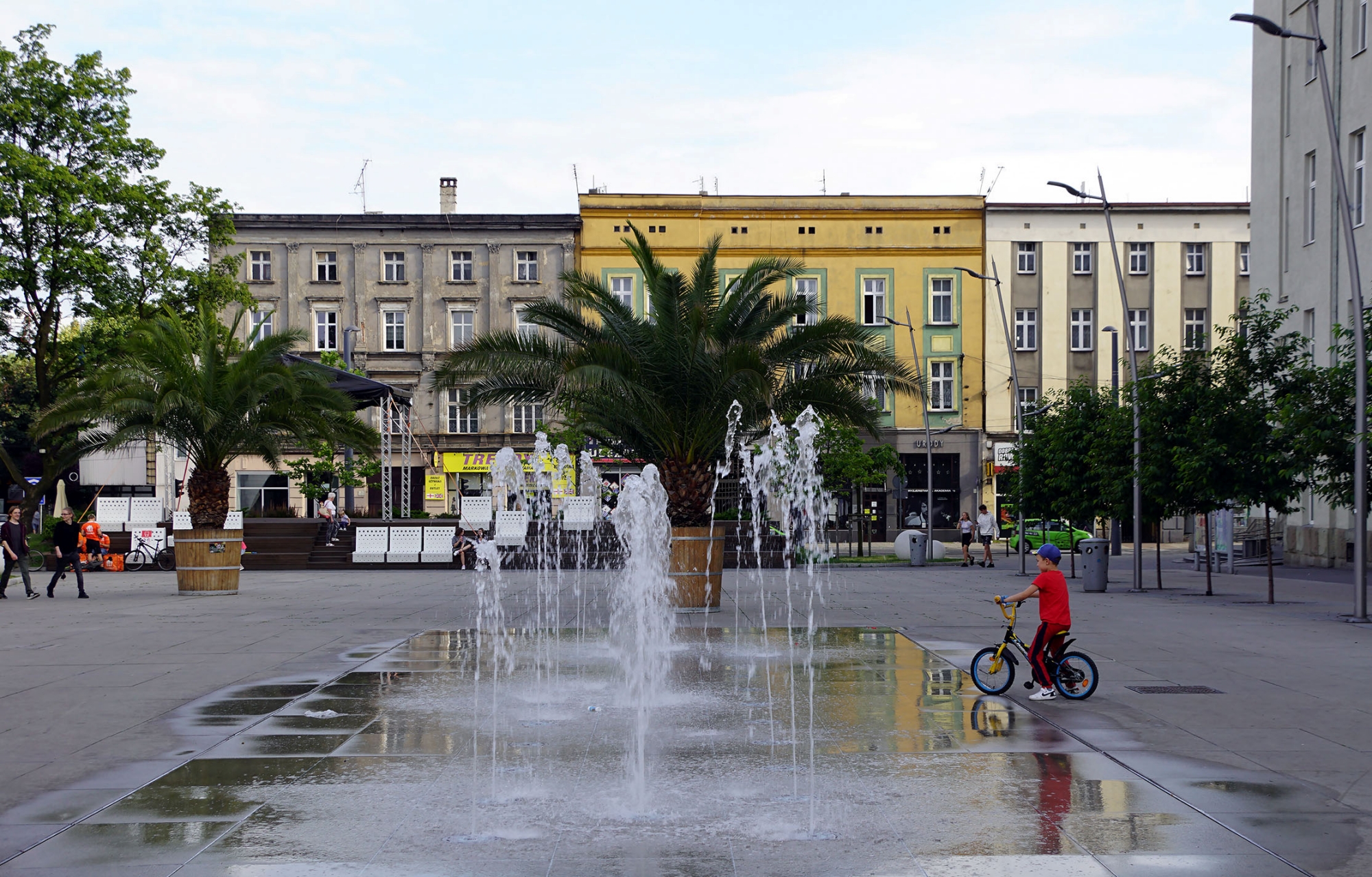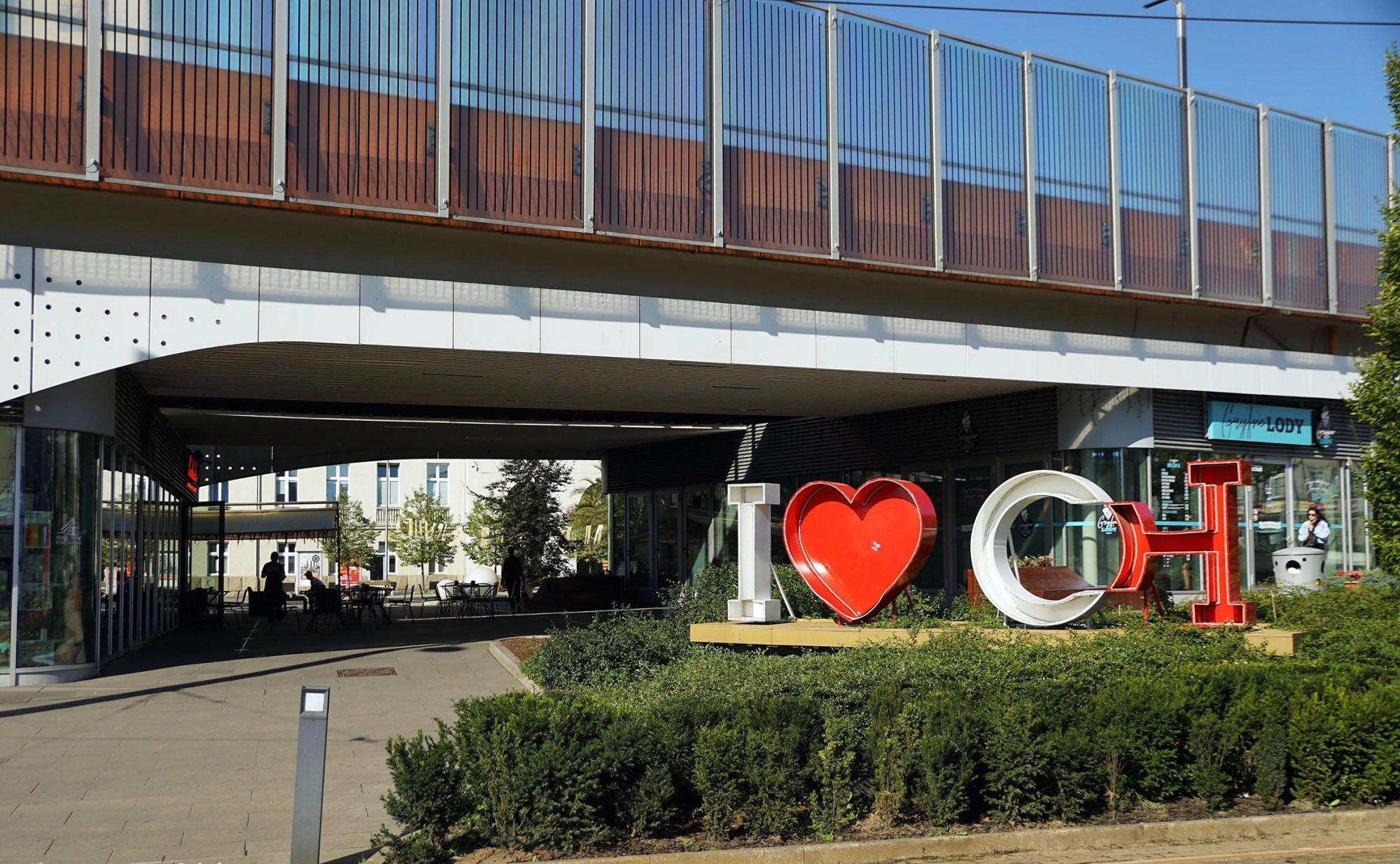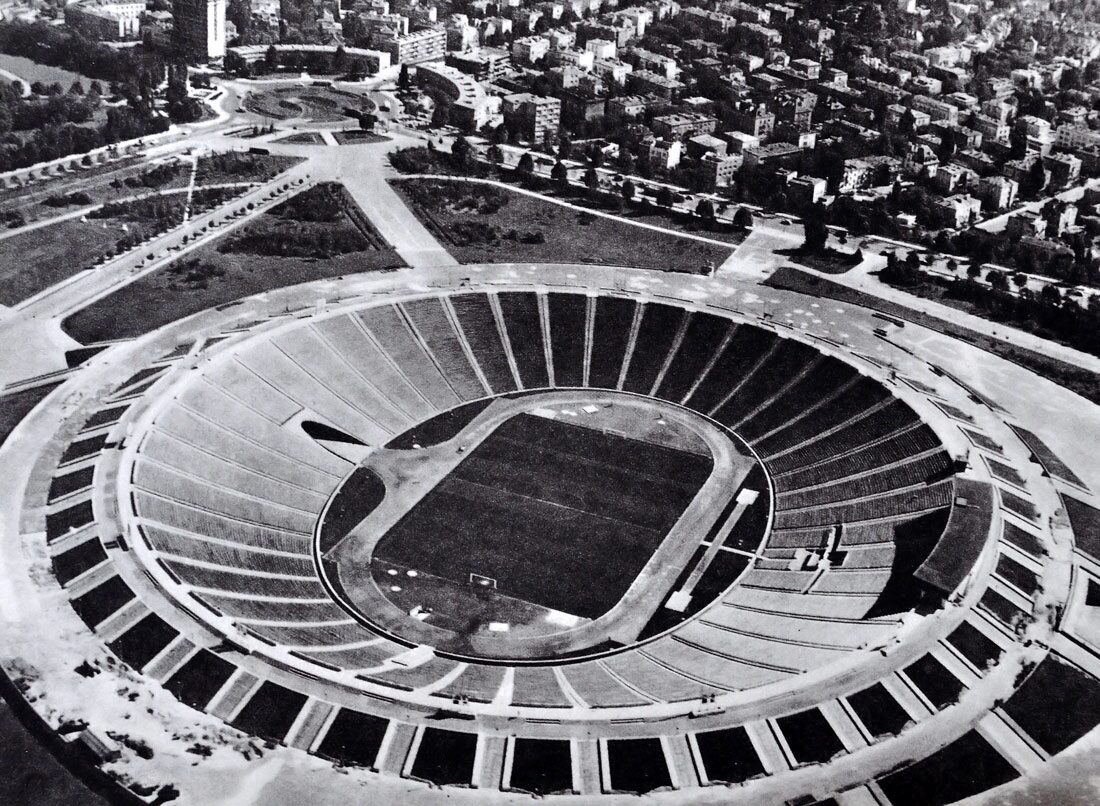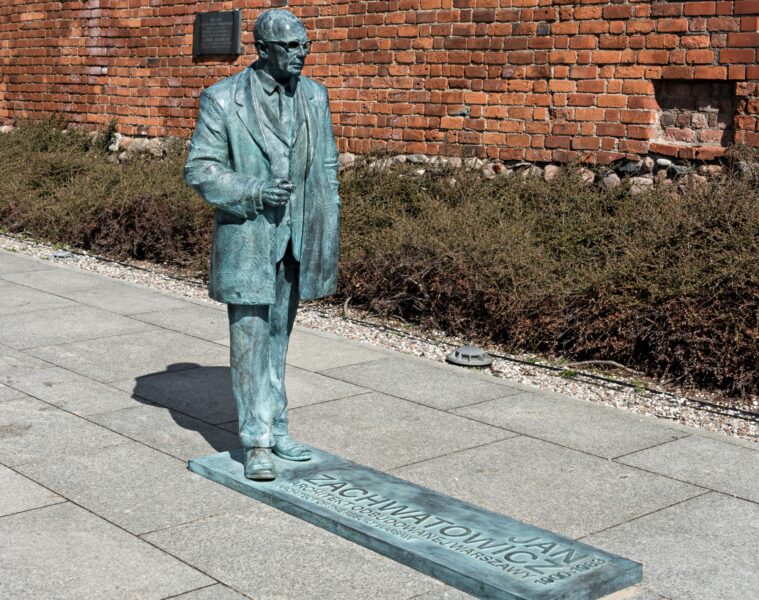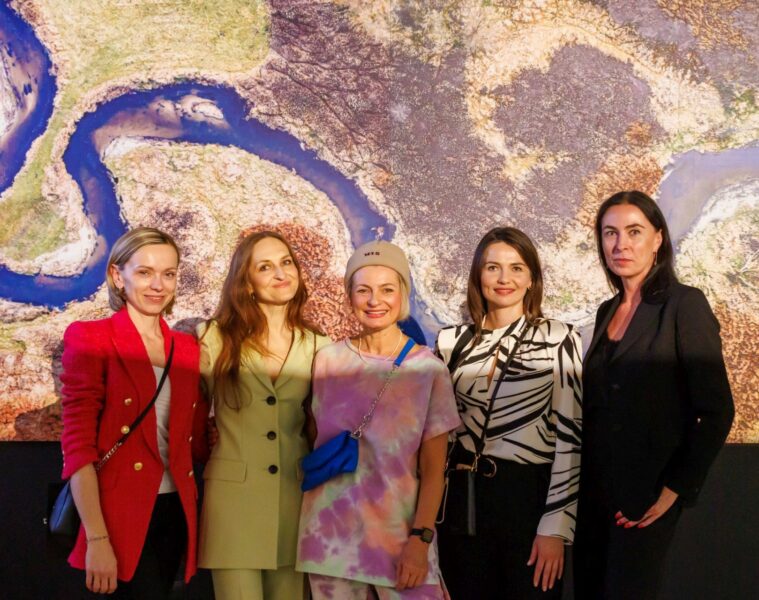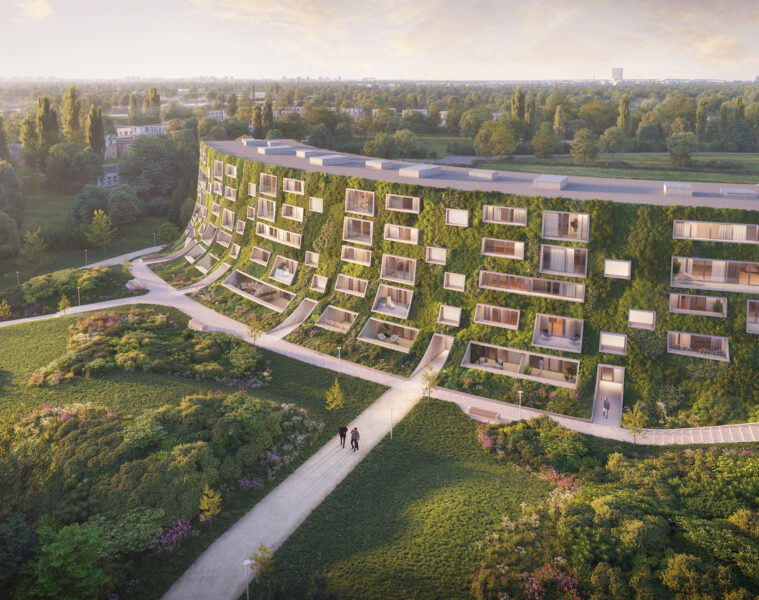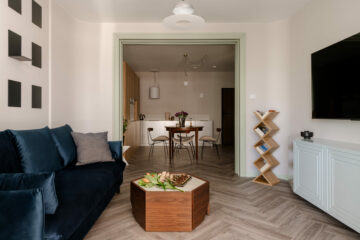Every day, tens of thousands of vehicles cross the flyover in Chorzów. It is undoubtedly one of the busiest places in this Silesian city. The structure was built in the 1970s as a very important investment to improve traffic flow. Its construction took place at the expense of the heart of the old Chorzów, the Market Square. As part of the work, streets were dug up, numerous townhouses were demolished, many trees were cut down and tram lines were moved. It was a state-of-the-art solution for the time, used among others in Germany. From today’s point of view, the whole project seems ridiculous and even a crime against the historic fabric of the city. The flyover has destroyed Chorzów’s city centre forever.
Chorzów’s market square was established at the end of the 19th century on the site of a former market, right next to the impressive city hall. The new square became a representative part and showpiece of the then Königshütte (Königshütte). It was a place of rest and recreation for the inhabitants – trees were planted there (including exotic palm trees), squares and alleys were created, and benches were placed near them. The square looked really beautiful.
The square at the beginning of the 20th century. Source: https://polona.pl/

The place served the people of Chorzow until the 1970s. With the passage of time and the development of motorisation and transport, the main roads began to concentrate within the square. Transit traffic – from Warsaw to Wrocław or Poznań – as well as the main tram lines ran through here. “The Chorzów Market Square is one of the most critical transport points in the Katowice region” – wrote Trybuna Robotnicza in the mid-1970s. At the time, the then authorities decided to rebuild the junction. As part of the work, a 400-metre-long flyover was built 7 m above the ground.
Chorzów Market Square on a postcard from 1919 and the same place today. Photo: Collection of the Silesian Museum and Google Earth
In order for the investment to come to fruition, a number of tenement houses surrounding the Market Square and part of the buildings in the city centre that stood in the way of the implementation of the expressway, considered at the time to be something modern and necessary, were demolished. Valuable architectural monuments, which in the 1970s were not regarded as something aesthetically pleasing or valuable, were destroyed without regret. At the time, townhouses were seen as uncomfortable to live in, outdated and cramped. Green-filled suburban estates were fashionable. Nor were people concerned about the cut-out greenery or the disfigurement of one of the most representative places in Chorzów. The flyover was widely praised as a modern traffic solution that would improve traffic flow. Local newspapers wrote that ‘this artery means a modern, functional and comfortable downtown, improved traffic and transport conditions, as much smoother, faster and collision-free driving will be possible here, the safety of vehicular and pedestrian traffic will be improved. Finally, the centre of Chorzów will gain in aesthetics”.
The market square and flyover during the renovation of the square carried out between 2017 and 2019.Photo: Google Earth
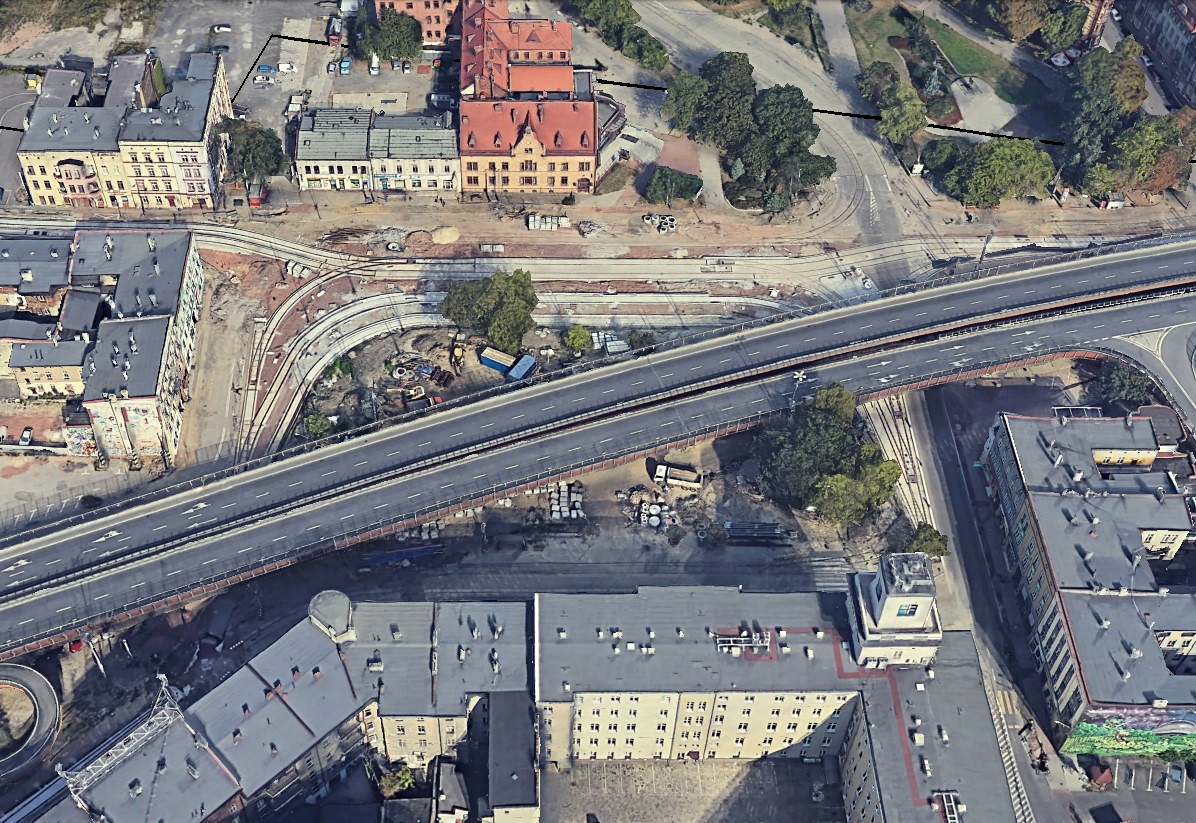
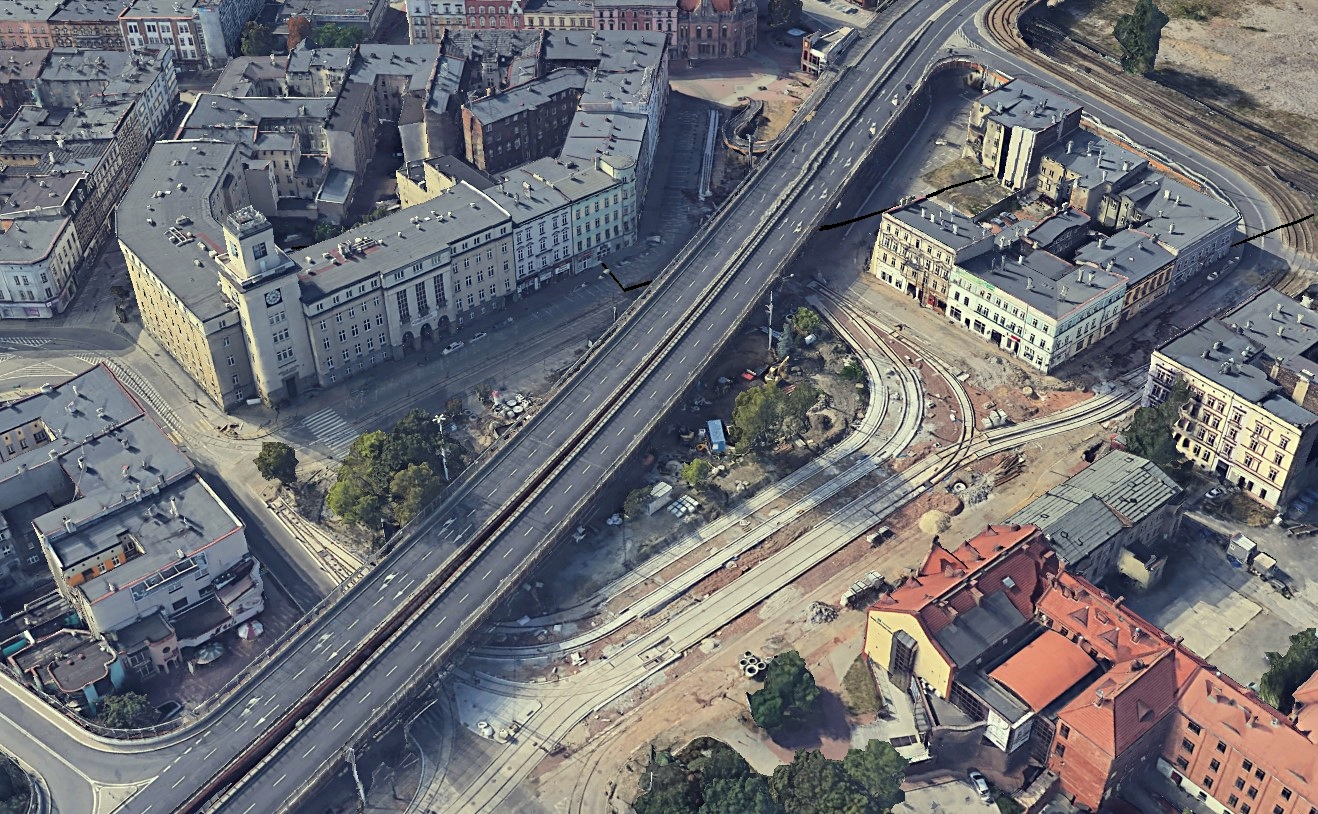

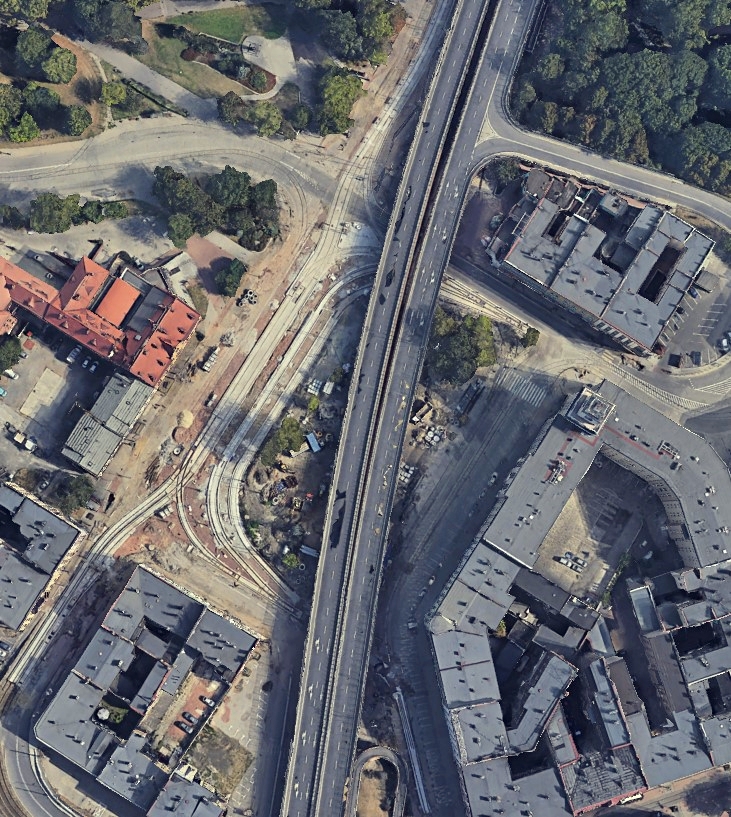
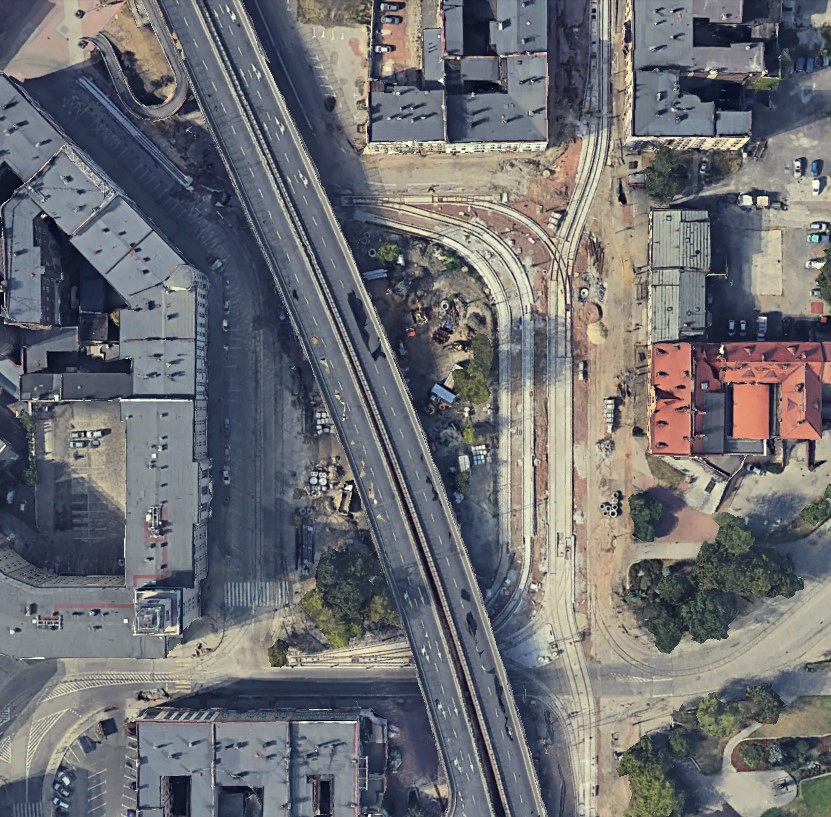
The project for the flyover was prepared by the Provincial Design Office in Zabrze, and executed by the Skoczów Branch of the Kielce Bridge Works Company under the supervision of the Department of Engineering Structures of the Silesian University of Technology. The investment, divided into three stages, began on 26 August 1976. Work lasted three years, although construction was not initially due to be completed until 1981. It was finally opened on 22 July 1979, on the occasion of the celebration of the rebirth of Poland to mark the 35th anniversary of the People’s Republic of Poland. It was possible to erect the structure so quickly because the road-builders were assisted by local residents. Employees of Chorzów’s largest factories and municipal companies, as well as soldiers and schoolchildren, were involved in the construction. Initially, the investment was successful and the congested city centre became more passable. However, it soon became apparent that this solution was insufficient, due to the dynamic increase in the number of cars. The building, which had been deteriorating for years, underwent its first major renovation only in 2013.
Market Square in 1937 and 2021. Source: szukajwarchiwach.gov.pl, NAC Reference No. 3/131/0/-/247/9 and Google Maps
With the passage of time, the changing mentality and consciousness of the inhabitants and the city’s authorities led to a sentimental reminiscence of the former Market Square, visible only in old photographs and postcards. The people of Chorzów wanted their square back. In 2019, the two-year-long reconstruction was completed. Under the unlucky flyover, pavilions were built to house, among other things, premises, shops, a gallery and an information point. An illuminated fountain, benches, seats and a stage were installed. Lawns, a variety of shrubs and trees, including the iconic exotic palm trees that can be admired in spring and summer, have returned to the Market Square.
The cost was around PLN 25-26 million, with EU funding of PLN 6.05 million, the Upper Silesian and Zagłębie Metropolis contributed more than PLN 3 million, and PLN 990,000 came from the state budget.
Source: chorzow.naszemiasto.pl, slazag.pl
Read also: Architecture in Poland | Urban planning | Squares, squares, parks | Architecture| City | Metamorphosis





